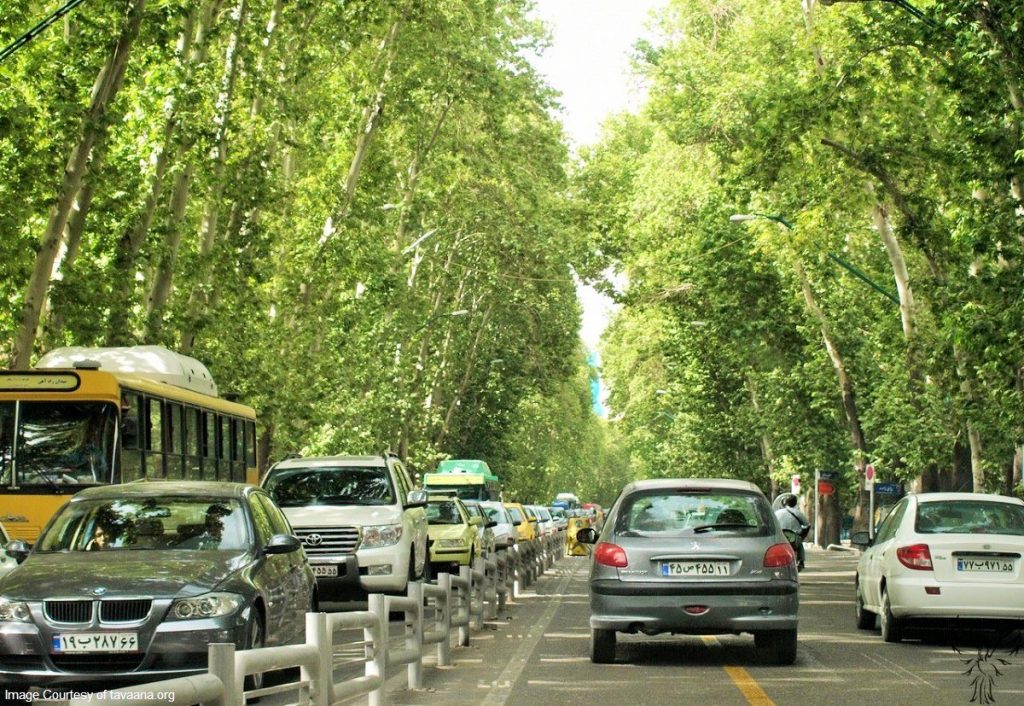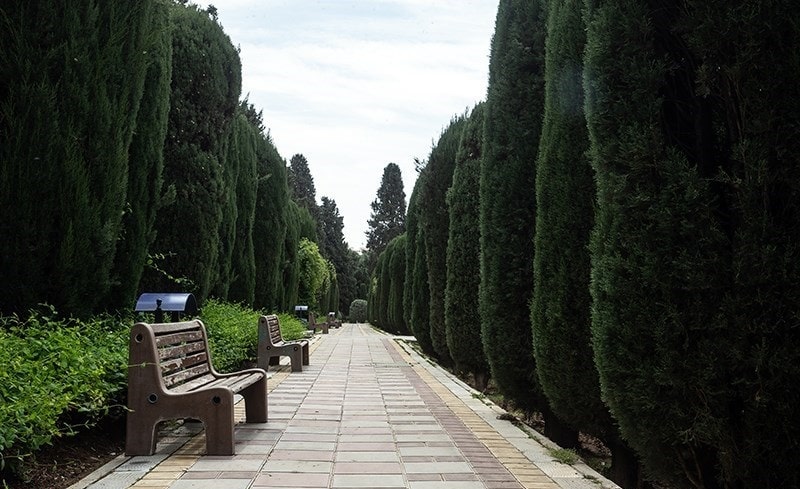Introduction in Valiasr Street
Have you ever heard of the tallest street in Tehran, Iran, and the Middle East?
Valiasr Street, the 18-kilometer-long wooded street, connects the south of Tehran to its pleasing north. Just a few hours strolling through its soaring plane trees to realize a genuine and indescribable presence. Valiasr Street, charming, like a train from Tehran Railway Square, starts its way to reach Shemiranat and Tajrish country by passing along the capital.
Pietro Dellavalle, an Italian tourist, wrote: “Tehran is the city of sycamore trees” he probably visited Valiasr Street! A street that is no longer like its distant past these days but still holds the pulse of the great metropolis of Tehran. Two long rows of tall sycamore trees have grown on both sides of the street, which, in addition to decorating and adorning the road, are also responsible for improving its air quality. Two streams of water flowed at the foot of these trees to complete the freshness of the street and water them.

History of Valiasr Street
Valiasr Street was a combination of smaller streets up and down the Alborz mountains range with more or fewer sycamore trees in ancient times. According to Abdullah Mostofi, in his memoirs, Reza Shah Pahlavi decided to build a street that linked his summer palace in the north of Tehran to the winter palace (Marble Palace) in the south. Thus, the Pahlavi Special Road, the longest intercity route, was born. In the time of Mohammad Reza Shah Pahlavi, the name of the road, which was later asphalted, was changed to Pahlavi Street.
At that time, the Shemiranat was a country region, and the passage was a road that passed through the hills. The Pahlavi Special Road was private until 1941 A.D, and people used to go to Tajrish from the old Shemiran road. Specific individuals, courtiers, ministers, ambassadors, and soldiers, were allowed to visit the king, traveling on the road. After September 1941 A.D, the dam broke, and the road became public. Allied vehicles and later people’s cars crossed the road, but it took years for the Pahlavi Road to become Pahlavi Street.

The flourishing of Valiasr Street
The road was known as a row of regular sycamore trees on both sides, and because sycamore is very compatible with the climate of Tehran, the sycamore was planted on both sides of Valiasr Street. During the reign of Reza Shah, a sycamore tree was planted on Pahlavi Street at a distance of two meters, and a rose bush between the two sycamore trees; Therefore, a total of 18,000 sycamore trees were planted on both sides of the 18-kilometer route. The presence of these plane trees has given an identity to Valiasr Street and has made it one of the most attractive streets in the world.
The former Pahlavi Street took its present form from 1953 to 1976 A.D, emerged from the desert, and became the longest street in the capital. Several thousand stores and dozens of restaurants and cafes emerged. People built villas and houses for themselves in the surrounding streets. The biggest cafes based in Tehran were established on the right side of the road, and modern cinemas were built on the western side, between Valiasr Square at that time and Vanak Square.
Pahlavi Street was initially called Mossadegh Street after the Islamic Revolution, but the name, after a while, has changed to Valiasr Street. Also, many huge shopping malls, public parks, restaurants, museums, cultural centres, and national and international offices had established on the street. Valiasr Street is one of the traditional shopping centres in Tehran, and as a result, its sidewalks are crowded, especially on the last days of the year.

Attractions of Valiasr Street
From the northernmost point of Valiasr Street, Tajrish Square, to the Railway square at the southernmost point, there are many various attractions that you can see by walking along the street. The Mellat Park is next to the Broadcasting organization, Saei and Daneshjoo Parks, the Cinema Museum located in the picturesque courtyard of Ferdows Garden. And most importantly, the stunning building of the City Theatre, where you can sit in the large area and catch your breath, or if you are interested, go to see the latest theatre in the capital! Whenever you feel hungry during your long walk, the fast-food restaurants, cafes, and restaurants on both sides of the street will be ready to welcome you.
Valiasr Street, with such strange contrasts, and all the magnificence and memories, which has been placed in its heart, is a clear view of the social life of the people of Tehran; A collection of traditional and modern Iranian culture, contemporary history, and near and far memories. What could be more enjoyable than having all of these together as we walk under the plane trees of the longest street in the Middle East?

